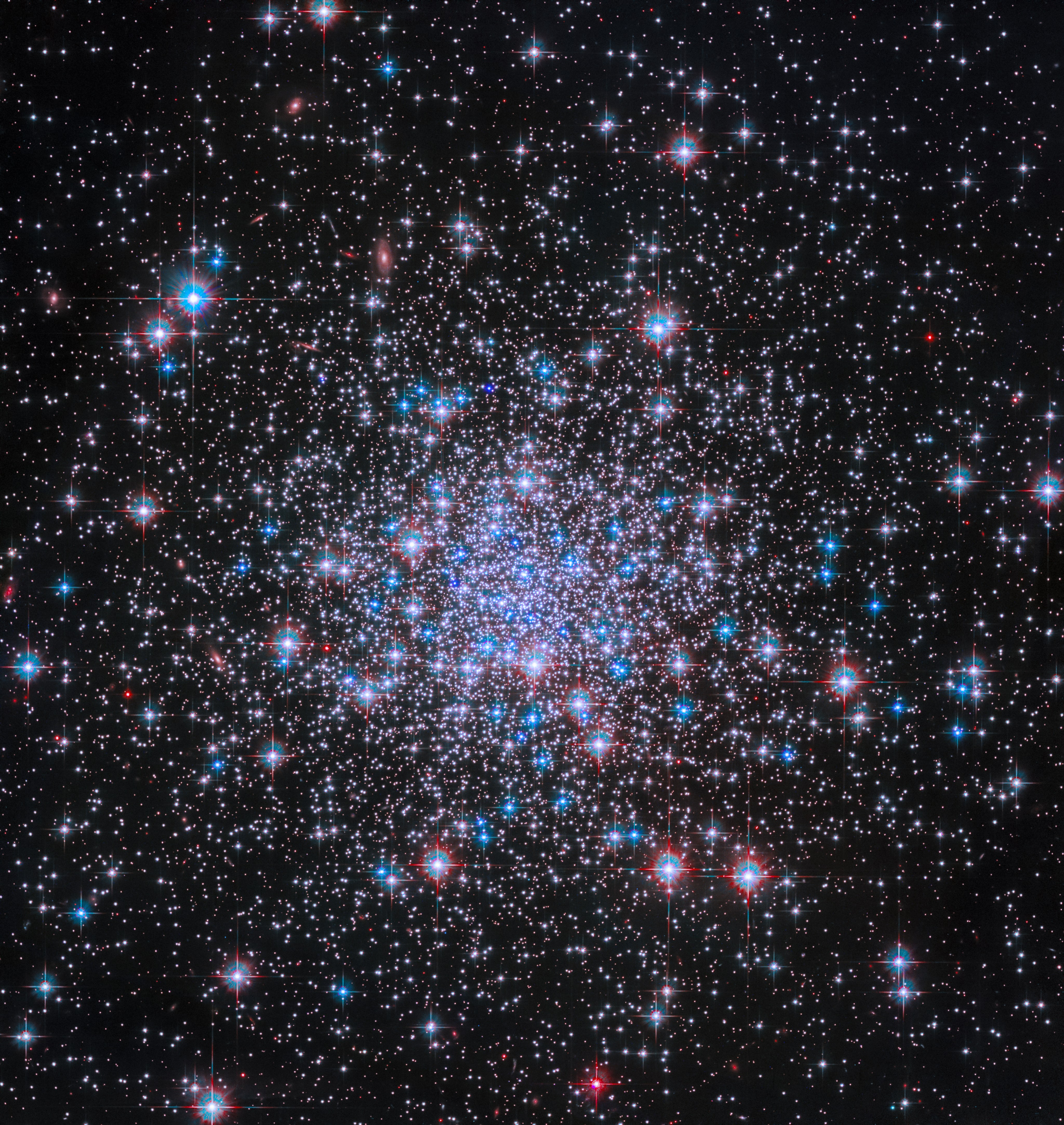
Hubble’s View of Globular Cluster NGC 2298
This new NASA Hubble Space Telescope view shows the globular cluster NGC 2298, a sparkling collection of thousands of stars held together by their mutual gravitational attraction. Globular clusters are typically home to older populations of stars, and they mostly reside in the dusty outskirts of galaxies. Scientists utilized Hubble’s unique ability to observe the cosmos across multiple wavelengths of light to study NGC 2298 in ultraviolet, visible, and near-infrared light. This valuable information helps astronomers better understand how globular clusters behave, including their internal movements, orbits, and the evolution of their stars.
Credits: NASA, ESA, G. Piotto (Universita degli Studi di Padova), and A. Sarajedini (Florida Atlantic University); Processing: Gladys Kober (NASA/Catholic University of America)
Image CreditNASA, ESA, G. Piotto (Universita degli Studi di Padova), and A. Sarajedini (Florida Atlantic University); Processing: Gladys Kober (NASA/Catholic University of America)
Size640x677px
